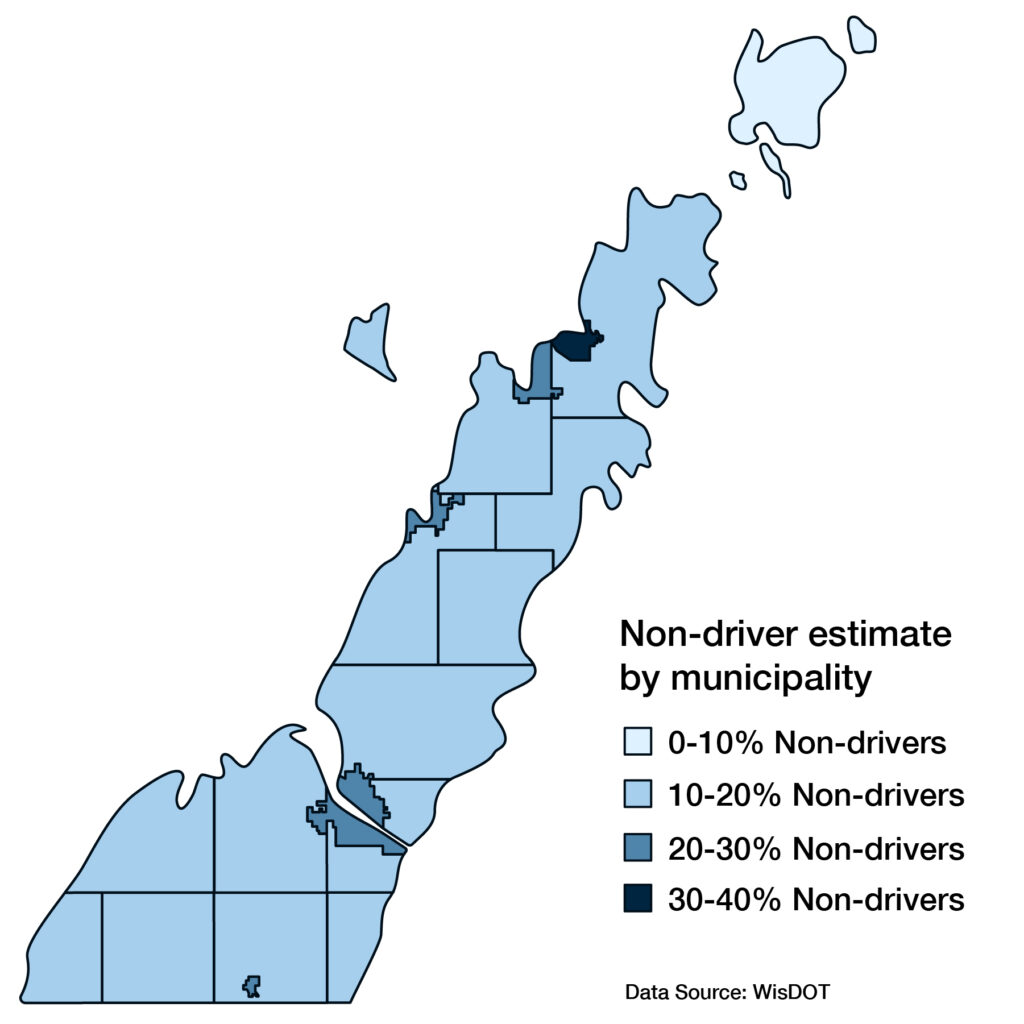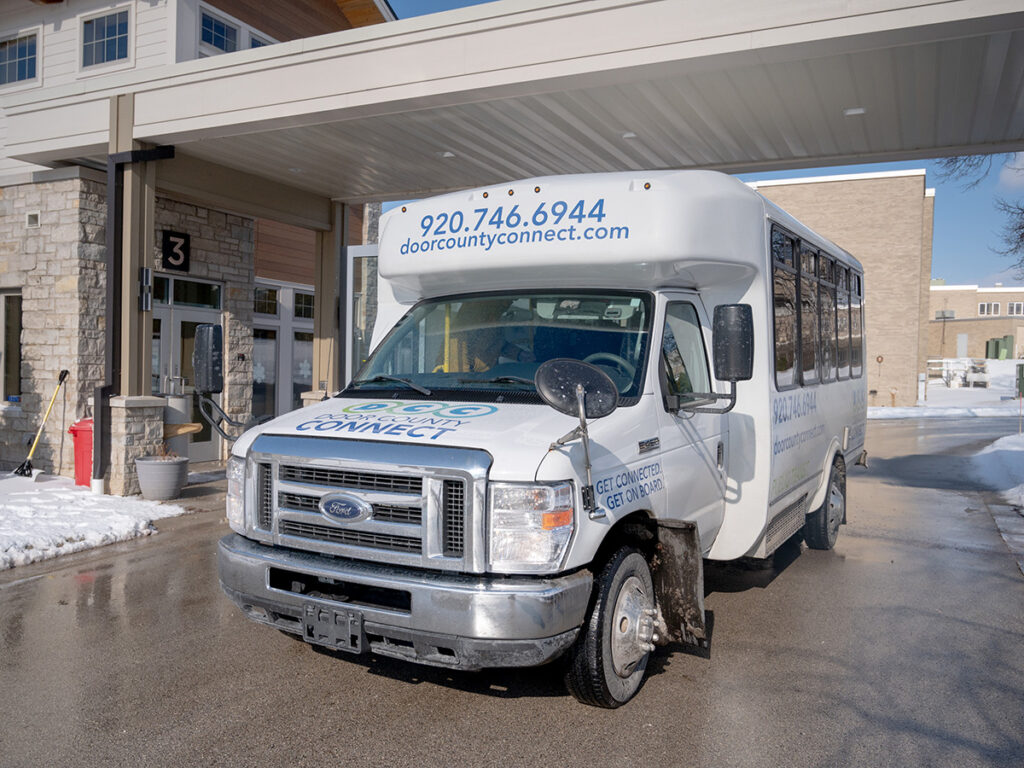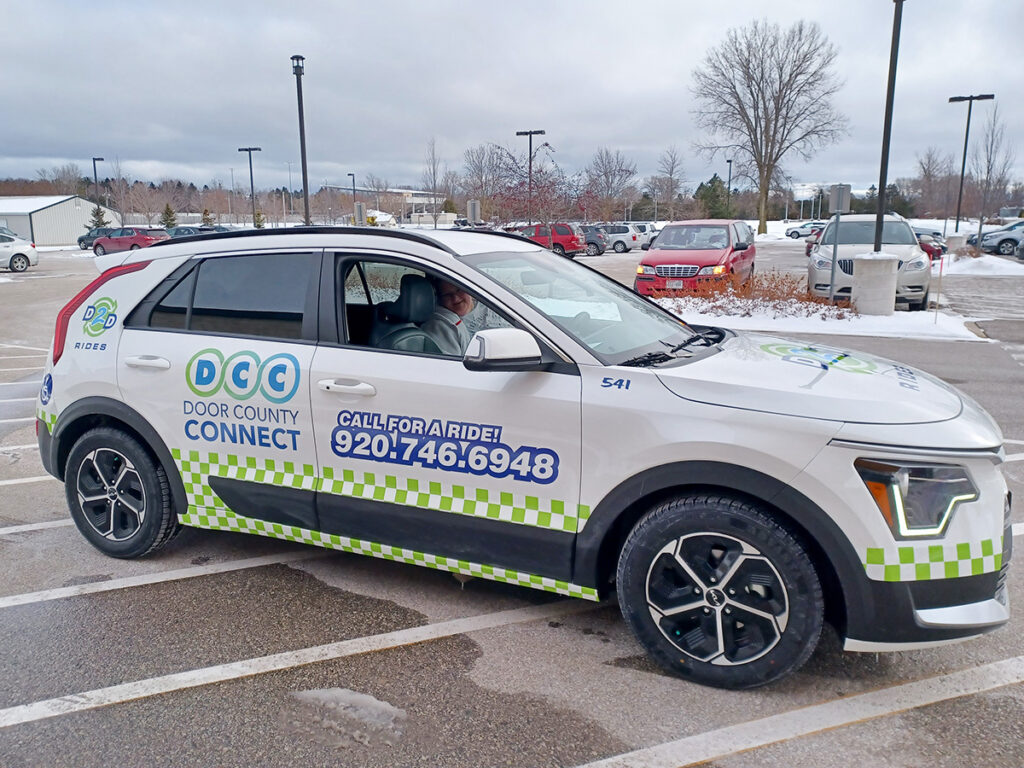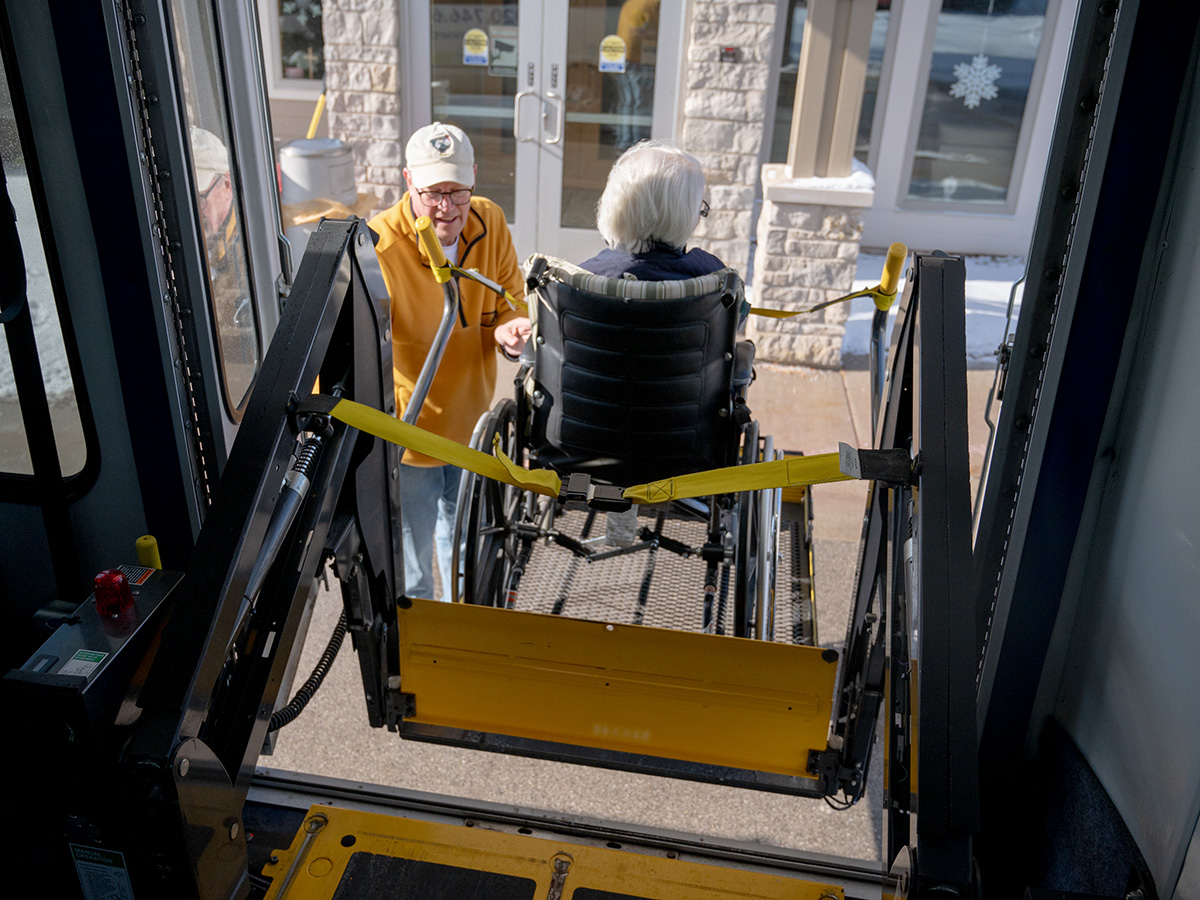Leaders of Door County public transportation agencies said late last month that it is too soon to tell how uncertainty surrounding federal funding could affect their programs, after the Trump administration issued and later rescinded an order to freeze federal funds nationwide.
The Door County Board of Supervisors approved the acceptance of several federal grants for broadband service expansion at its Jan. 28 meeting. During the board’s discussion, those involved raised the question of how federal decisions might affect local programs.
“Too soon to tell,” board chair David Englebert said.
Broadband expansion is one of several projects in Door County that rely at least in part on federal funding. Public transportation is another, and it impacts thousands of Door County residents and visitors.
Door County Connect Public Transit, the county’s answer to its public transportation needs, receives more than half of its budget through a Federal Transit Administration grant. Representatives for the program indicated they were taking a wait-and-see approach and counting on state agencies to keep them updated on federal changes.
Scale of local public transportation
According to data collected by local nonprofit Door-Tran, Door County transportation providers provided a total of 81,124 rides in 2024, excluding private taxi services. Nikki Voight, Door-Tran’s executive director, said that though taxi services did not provide rider counts, Door-Tran’s voucher program totals reflect some of those rides.
Of those rides, 46,332 were provided by the county government’s public transportation services, for a total of 1,600 individuals served. Door County Connect Public Transit is the official name of the county government’s transportation program, and it provides two services.
Door 2 Door Rides provides a shared taxi service with wheelchair-accessible vans throughout the county, except on Washington Island. Abby Vans has held the contract for the latest five-year bid cycle and charges the county a daily rate.
The other service is Door County Connect, and it has bus and van service and provides rides in the City of Sturgeon Bay and within a 10-mile radius from the Aging and Disability Resource Center in Sturgeon Bay.
Both services are accessible to anyone, regardless of age or ability, said Pam Busch, the Door County government’s transportation department manager.
The county public transit program also partners with Door-Tran, which has a roster of 42 volunteer drivers, to provide rides through Door 2 Door. Public Transit also shares its wheelchair accessible van, the county Veteran’s Services Office pays for fuel costs, and Door-Tran staff and volunteer drivers provide rides for Door County veterans to get to medical appointments outside of the county at no cost.
Economics of the ride
Busch said she is pleased to see rider numbers going up, but at the same time, costs are also going up. Expenses for Door County Connect Transit Services increased from $1,107,149 in 2024 to a projected $1,353,150 in 2025.
The county tax levy, City of Sturgeon Bay tax levy, and federal funding pay for transit services, Busch said, with more than half of the budget received through the Federal Transit Administration. The Wisconsin Department of Transportation administers the funding at the state level.
Door-Tran receives most of its funding through the Wisconsin Department of Transportation, as well as private grants and donations.
The pool of state resources is limited, however, and there are more municipalities vying for the same funding every year, Voight said. She added that Door-Tran relies heavily on grants, but she would like to see even more local support for the program.
Voight said she tries to get people who can drive to think about transportation accessibility. If they invest in public transportation services now, it will be there if they may need it someday, she said.
As far as limited state funding, Door-Tran is a member of the Wisconsin Association of Mobility Managers, which lobbies legislators for more money to be put into transportation programs. Representation of transportation insecurity is really important, Voight said, and lawmakers must see the need to understand it.
“Who’s making our laws?” she said. “Typically it’s people who are white collar. There are blue collar people as well, but they’re not really the people that are in poverty that are making these laws.”
As far as the Trump administration’s recent federal funding maneuvers, both Busch and Voight said it was too soon to tell how their programs’ funding may be affected.
The money that the county public transit program receives from the federal government is in the form of reimbursement grants through the state Department of Transportation, according to Busch. If there was any fear at the state level that federal money might not come through, “I would expect that they would alert us as soon as possible,” she said.
A big, and invisible, need
Hopping in a car and going somewhere is an ability most drivers probably take for granted. Transportation insecurity, or lack of access to transportation, is a sort of “invisible need,” according to Voight.
“You don’t think of it until you need it,” she said.

Whether by choice or circumstance, non-drivers make up 31 percent of Wisconsin’s total population, according to the Wisconsin Department of Transportation. In Door County, that number is between 10 and 30 percent depending on the municipality.
Many students, senior citizens, people with disabilities and those who cannot afford a car fall under the non-driver category. There are also people who just prefer not to drive. In fact, the number of teens and young adults with drivers licenses has dropped significantly since the 1980s, when about half of eligible 16- and 17-year-olds had a driver’s license. In 2022, only 25 percent did, according to the Federal Highway Administration.
This is where public transportation can step in to fill the gap. In 2001 and 2005, United Way of Door County identified transportation as the number one need in Door County, based on survey data. In 2007 a group of people stepped up to address the issue. With 50 members today, the Transportation Resource Improvement Partners was formed to determine public transportation options in Door County.

The solution involves a network of public and private partnerships funded by donations, federal and state grants, and city and county taxpayers.
Municipalities are not mandated by the state or federal government to provide public transportation, Busch said. But without it, she said, “there would be a lot of people in our community that just simply would be in crisis.”
Public transportation is a lifeline for getting some people to and from work, Busch said, or keeping elderly people from being shut-ins, or getting people to medical appointments.
“Think of the domino effect,” Busch added, referring to people not able to maintain jobs, more reliance on food and housing aid, and declines in physical and mental health.
Nonprofit program
Door-Tran has additional programs of its own to get people where they need to go. One of those is a vehicle purchase and maintenance loan program, getting low-income people or people who have just fallen on hard times back into a working vehicle, Voight said. That includes people in recovery from substance use disorder.
“That is a disability,” she said, and staff will work with probation and parole programs on a case-by-case basis. As long as someone is working and does not have an open DUI/OWI case, they would be eligible for the loan program, she added.
For a vehicle loan, individuals need to put 20 percent down, and Door-Tran staff will work with them to find that money, as well, Voight said.
“It’s a hand up, it’s definitely not a handout,” she said.
Door-Tran also provides vouchers for fuel and private transportation services and limited amounts for vehicle repairs. Its staff will work with anyone to try to meet their transportation needs, Voight said.
Communities served
Sturgeon Bay-based Inspired Employment LLC provides education and employment services for teenagers and adults with disabilities. Co-owner Tami Schwalen opened the business in 2022 and said it would not be as successful without the transportation services Door County provides.
Inspired Employment offers a number of services to clients, including on-site job training, social activities and skills training at their offices. On average, 20 clients per day use Door County Connect Public Transit services to get to Inspired Employment offices, community programs or their jobs. In the summer, that number almost doubles, Schwalen added.
Inspired Employment has its own fleet of seven vehicles, as well, to get clients where they need to be. Schwalen said transportation is one of the biggest costs for the company.
The business’s services are paid through clients’ managed care programs, and transportation costs are built into fees, Schwelen said.
“But quite honestly, transportation costs are gigantic for us,” she added. “I have seven car payments and seven vehicles that need insurance.”

Inspired Employment does not have a wheelchair-accessible vehicle, and the company is looking into fundraising for one. Such vehicles can cost anywhere from $60,000 to $80,000, Schwalen said.
Schwalen said using public transportation and budgeting for it are skills some of her clients need to learn, and working with Public Transit and Door-Tran has helped the company provide that training.
Schwelen or staff send a weekly email to Public Transit with the transportation needs of their clients for that week, based on work and programming schedules. Busch then lines up the rides. Schwalen said this helps their clients to keep organized.
“The individuals that we serve have a disability, and they want to do things and be like anybody,” Schwalen said. “They want to go out and have fun, and they want to have friends, and they want to have a job, and the majority of them just need to be able to get that chance. Without public transportation for them to be able to do that, they're really stuck at their homes. If you don't have a vehicle, it feels really horrible.”
Limitations
One complaint voiced by some county public transit users is that a 30-minute pickup window for Door-2-Door service is inconvenient, according to Busch. The county put a goal of decreasing that window to 20 minutes within the City of Sturgeon Bay in its most recent Coordinated Transportation Plan, required every three years to secure federal funding.
In order to serve the more rural areas of the county, Door 2 Door needs that 30-minute window as a shared ride taxi system, Busch said.
“So if somebody's out in Rosiere and they need to come to Sturgeon Bay, then somebody in Brussels can share that ride with them because (the driver) has got that little window to go a little bit out of the way,” she explained. “It’s one of those things where (if) you take it away, then you can't provide as many rides.”
Door 2 Door service extends throughout the county, except for Washington Island, and is separated into zones. The majority of riders are in and around Sturgeon Bay, so hours and availability are more limited in the rural zones, Busch said. Washington Island has its own municipal service, the Community Van, as well.
Private taxis and Uber or Lyft drivers can also fill gaps and low-income riders can use vouchers to defray costs. Just how many taxis or private services are available depends on the season and time of day. Busch acknowledged that while it is not a perfect system, it is one that other rural Wisconsin communities look to for inspiration.
“I don't know how many other communities have as many partnerships as what we have in Door County,” she said. “It’s unique. A county department will rely on a nonprofit partner, and vice versa. You typically don't see that happening a whole lot.”
As far as what the future brings regarding funding, when public transportation was initially identified as a need in the early 2000s, county stakeholders sat down together and brainstormed solutions. This kind of collaboration can be used to address any issues the county faces, Busch said.
“Everybody contributes what they can or brainstorms what we need,” she said.

